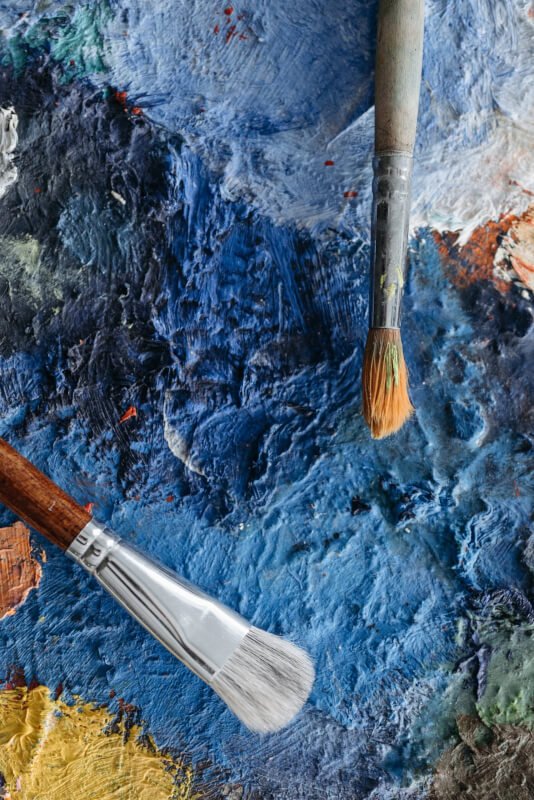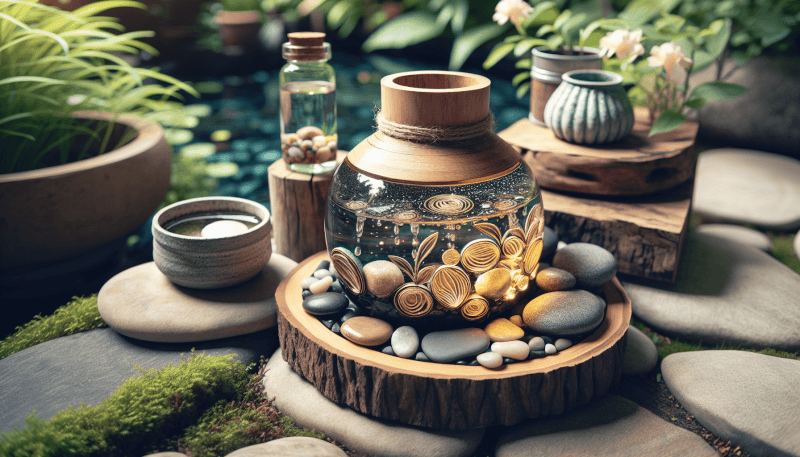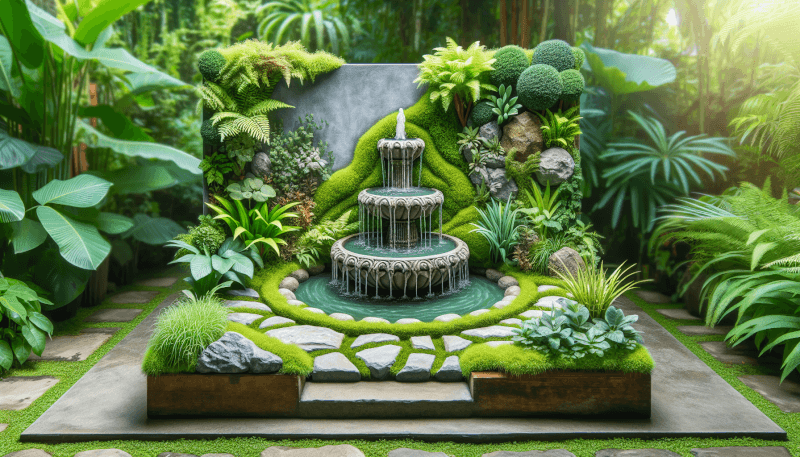Are you looking to add a unique touch to your garden? Look no further! In this article, we will share with you 10 creative and budget-friendly DIY ideas to create stunning water features in your garden. From mesmerizing fountains to tranquil ponds, these ideas will not only enhance the aesthetic appeal of your outdoor space but also provide a serene and soothing atmosphere. So, grab your tools and get ready to unleash your creativity!
1. Potted Fountain
A potted fountain is a simple yet elegant addition to any garden. It can add a touch of serenity and tranquility to your outdoor space. Here’s a step-by-step guide on how to create your very own potted fountain:
1.1. Materials Needed
- A large decorative pot or container
- A small water pump
- A fountain head attachment
- Clear plastic tubing
- Decorative stones or pebbles
- Water
1.2. Steps to Create
- Step 1: Choose a suitable pot or container for your fountain. It should be large enough to hold the water pump and deep enough for the water to circulate.
- Step 2: Install the water pump inside the pot according to the manufacturer’s instructions. Make sure it is secure and positioned correctly.
- Step 3: Attach the fountain head to the top of the water pump. This will create the desired water flow and spray pattern.
- Step 4: Connect the clear plastic tubing to the water pump and position it so that it reaches the desired height of the fountain.
- Step 5: Fill the pot with water, ensuring that the water level covers the water pump.
- Step 6: Add decorative stones or pebbles to the pot. These will not only enhance the aesthetic appeal but also help to stabilize the fountain.
- Step 7: Plug in the water pump and watch as the water begins to flow and create a soothing sound.
1.3. Maintenance Tips
- Ensure that the water pump is always submerged in water to prevent damage.
- Clean the fountain regularly to remove any debris or algae buildup.
- Check the water level regularly and top it up as needed.
- Consider using a water treatment solution to prevent algae growth and maintain water clarity.
2. Solar Powered Birdbath
Creating a solar powered birdbath not only attracts birds to your garden but also takes advantage of renewable energy. It’s an environmentally-friendly and low-maintenance water feature. Here’s how you can make your own solar powered birdbath:
2.1. Materials Needed
- A large shallow basin or bowl
- A solar panel with a water pump
- Clear plastic tubing
- Decorative stones or pebbles
- Water
2.2. Steps to Create
- Step 1: Select a suitable basin or bowl for your birdbath. Make sure it is shallow enough for birds to comfortably drink and bathe in.
- Step 2: Place the solar panel in a position where it will receive ample sunlight throughout the day.
- Step 3: Install the water pump according to the manufacturer’s instructions and connect it to the solar panel.
- Step 4: Position the clear plastic tubing so that it reaches from the water pump to the birdbath basin.
- Step 5: Fill the basin with water, ensuring that the water level is suitable for birds.
- Step 6: Add decorative stones or pebbles to the basin to provide perching spots for the birds and enhance the overall look.
- Step 7: Allow the solar panel to charge in the sun, and soon enough, the water pump will start circulating water in the birdbath.
2.3. Maintenance Tips
- Regularly clean the birdbath to keep the water fresh and inviting for the birds.
- Check the solar panel periodically to ensure that it is clean and free from any debris or obstructions.
- Remove any fallen leaves or dirt from the basin to maintain water clarity.
- During colder seasons, consider storing the birdbath or protecting it from freezing temperatures.

3. Recycled Barrel Waterfall
Repurposing a barrel to create a stunning waterfall feature is a great way to add a unique touch to your garden. Not only does it add visual interest, but the soothing sound of falling water can create a calm and relaxing atmosphere. Here’s how you can make your own recycled barrel waterfall:
3.1. Materials Needed
- A large barrel or drum
- A water pump
- Clear plastic tubing
- A drill with various drill bits
- Decorative rocks or pebbles
- Water
3.2. Steps to Create
- Step 1: Choose a suitable barrel or drum that is large enough to hold the water pump and deep enough for the water to cascade down.
- Step 2: Drill a hole near the bottom of the barrel for the clear plastic tubing to pass through. Ensure that it is large enough for the tubing to fit securely.
- Step 3: Install the water pump inside the barrel, positioning it at the bottom to allow water circulation.
- Step 4: Connect one end of the clear plastic tubing to the water pump and thread it through the hole in the barrel.
- Step 5: Position the other end of the tubing above the barrel to allow water to flow back into the barrel, creating the waterfall effect.
- Step 6: Decorate the barrel and the surrounding area with rocks or pebbles to enhance the natural appearance.
- Step 7: Fill the barrel with water, ensuring that the water level covers the water pump and tubing.
3.3. Maintenance Tips
- Regularly check the water level and top it up as needed.
- Clean the barrel and rocks to prevent debris or algae buildup.
- Inspect the tubing for any leaks or blockages and address them promptly.
- Consider using a water treatment solution to maintain water clarity and prevent algae growth.
4. Stone Step Waterfall
If you have stone steps in your garden, why not transform them into a beautiful waterfall feature? It adds a touch of natural beauty and creates a soothing atmosphere. Here’s how you can create your own stone step waterfall:
4.1. Materials Needed
- Large flat stones for the steps
- A water pump
- Clear plastic tubing
- Decorative rocks or pebbles
- Water
4.2. Steps to Create
- Step 1: Choose the location for your stone step waterfall, ensuring that it is near a water source and accessible for installation and maintenance.
- Step 2: Arrange your large flat stones to create a series of steps. Ensure that they are stable and level, with each step slightly lower than the previous one.
- Step 3: Install the water pump near the bottom step, ensuring that it is secure and positioned correctly.
- Step 4: Connect the clear plastic tubing to the water pump and position it so that it reaches from the pump to the top step.
- Step 5: Conceal the tubing along the sides of the steps using decorative rocks or pebbles.
- Step 6: Fill the top step with water and allow it to flow down to the subsequent steps, creating the waterfall effect.
- Step 7: Adjust the water pump settings to control the flow and sound of the waterfall.
4.3. Maintenance Tips
- Regularly check the water level and top it up as necessary.
- Clean the stones and surrounding area regularly to prevent debris or algae buildup.
- Inspect the tubing for any leaks or blockages and address them promptly.
- Consider using a water treatment solution to maintain water clarity and prevent algae growth.

5. Rain Chain
A rain chain is a beautiful alternative to traditional downspouts. It guides rainwater down from your roof and creates a visually appealing waterfall effect. Here’s how you can create your own rain chain:
5.1. Materials Needed
- A chain or series of metal rings
- Decorative ornaments or cups
- S-hooks or small metal clips
- Water collection basin or rain barrel
5.2. Steps to Create
- Step 1: Determine the length of the rain chain needed by measuring the distance from the roof to the ground.
- Step 2: Attach the chain or series of metal rings to the top edge of your roof, ensuring that it is securely fastened.
- Step 3: Attach the decorative ornaments or cups to the chain at regular intervals using S-hooks or small metal clips.
- Step 4: Position a water collection basin or rain barrel at the end of the rain chain to catch the water.
- Step 5: Ensure that the rain chain is angled slightly downward to allow water to flow freely.
- Step 6: Watch as rainwater cascades down the chain, creating a mesmerizing and soothing waterfall effect.
- Step 7: Empty and clean the water collection basin or rain barrel regularly to prevent stagnant water and debris buildup.
5.3. Maintenance Tips
- Inspect the rain chain regularly for any damage or loose connections, and repair or replace as necessary.
- Clean the rain chain and decorative ornaments periodically to remove any dirt or debris.
- Keep the water collection basin or rain barrel clean to prevent clogs and ensure proper water flow.
- Consider adding a diverter to the chain to redirect excess water during heavy rainfall.
6. Bamboo Water Feature
A bamboo water feature adds an element of natural beauty and tranquility to your garden. It’s relatively easy to create and can be customized to suit your preferences. Here’s how you can make your own bamboo water feature:
6.1. Materials Needed
- A bamboo pole or tube
- A submersible water pump
- Clear plastic tubing
- Decorative rocks or pebbles
- Water
6.2. Steps to Create
- Step 1: Select a bamboo pole or tube that is suitable for your desired height and size of the water feature.
- Step 2: Drill a hole near the bottom of the bamboo, ensuring that it is large enough for the clear plastic tubing to pass through.
- Step 3: Install the submersible water pump inside a water container or basin, following the manufacturer’s instructions.
- Step 4: Connect one end of the clear plastic tubing to the water pump and thread it through the hole in the bamboo.
- Step 5: Position the other end of the tubing near the top of the bamboo to allow water to flow down.
- Step 6: Place decorative rocks or pebbles at the base of the bamboo to stabilize it and enhance the visual appeal.
- Step 7: Fill the water container or basin with water, ensuring that the water level covers the water pump.
- Step 8: Turn on the water pump and enjoy the calming sound of water flowing through the bamboo.
6.3. Maintenance Tips
- Regularly check the water level and top it up as needed.
- Clean the bamboo and decorative rocks or pebbles to prevent debris or algae buildup.
- Inspect the tubing for any leaks or blockages and address them promptly.
- Consider using a water treatment solution to maintain water clarity and prevent algae growth.

7. Floating Water Candles
Floating water candles are a simple yet enchanting addition to any garden water feature. They create a warm, flickering glow that adds a magical ambiance to your outdoor space. Here’s how you can create your own floating water candles:
7.1. Materials Needed
- Floating candles
- A large container filled with water (such as a basin or pond)
- Optional: Clear glass containers or vases
7.2. Steps to Create
- Step 1: Fill a large container with water, such as a basin or pond. Ensure that the water level is suitable for floating candles.
- Step 2: Place floating candles gently on the water’s surface, spacing them out evenly.
- Step 3: If desired, place clear glass containers or vases in the water and then place the floating candles inside them. This will add an extra layer of elegance to the display.
- Step 4: Light the floating candles and enjoy the ethereal glow they create on the water’s surface.
7.3. Maintenance Tips
- Keep a close eye on the floating candles and never leave them unattended while lit.
- Avoid using flammable materials near the floating candles or the water feature.
- Regularly clean the water to prevent debris or algae buildup and ensure a clean and clear appearance.
8. Wine Barrel Fountain
A wine barrel fountain adds a rustic charm to your garden while providing the soothing sound of flowing water. It repurposes old wine barrels and creates an eye-catching focal point in your outdoor space. Here’s how you can create your own wine barrel fountain:
8.1. Materials Needed
- Old wine barrel
- Water pump
- Clear plastic tubing
- A drill with various drill bits
- Decorative rocks or pebbles
- Water
8.2. Steps to Create
- Step 1: Find an old wine barrel that is in good condition and suitable for holding water.
- Step 2: Drill a large hole in the center of the barrel’s top using a drill bit that matches the diameter of the clear plastic tubing.
- Step 3: Install the water pump inside the barrel, ensuring that it is securely positioned at the bottom and centered in the hole.
- Step 4: Connect one end of the clear plastic tubing to the water pump and thread it through the hole in the barrel.
- Step 5: Position the other end of the tubing near the desired fountain location, ensuring that it is higher than the barrel to allow for water flow.
- Step 6: Decorate the barrel and the surrounding area with decorative rocks or pebbles to enhance the visual appeal and stability.
- Step 7: Fill the barrel with water, ensuring that the water level covers the water pump.
- Step 8: Plug in the water pump and enjoy the mesmerizing sight and sound of the flowing water.
8.3. Maintenance Tips
- Regularly check the water level and top it up as needed.
- Clean the barrel and decorative rocks or pebbles to prevent any debris or algae buildup.
- Inspect the tubing for any leaks or blockages and address them promptly.
- Consider using a water treatment solution to maintain water clarity and prevent algae growth.

9. Terra Cotta Pot Waterfall
Transforming terra cotta pots into a stunning waterfall feature is a creative and budget-friendly way to add a unique touch to your garden. It’s easy to customize and can be adapted to suit any space or design preference. Here’s how you can create your own terra cotta pot waterfall:
9.1. Materials Needed
- Different sizes of terra cotta pots
- A water pump
- Clear plastic tubing
- Decorative rocks or pebbles
- Water
9.2. Steps to Create
- Step 1: Select a variety of terra cotta pots in different sizes, ensuring that they can be stacked to create the desired waterfall effect.
- Step 2: Install the water pump at the base of the waterfall, following the manufacturer’s instructions.
- Step 3: Connect one end of the clear plastic tubing to the water pump and position it to reach the top of the first pot.
- Step 4: Stack the pots on top of each other, allowing the water to flow down from one pot to the next.
- Step 5: Secure the pots together using adhesive or by strategically positioning them.
- Step 6: Add decorative rocks or pebbles to each pot to enhance the aesthetic appeal and stabilize the waterfall.
- Step 7: Fill the top pot with water, ensuring that the water level covers the water pump.
- Step 8: Turn on the water pump and watch as the water cascades down the terra cotta pots, creating a mesmerizing waterfall effect.
9.3. Maintenance Tips
- Regularly check the water level and top it up as needed.
- Clean the pots and decorative rocks or pebbles to prevent any debris or algae buildup.
- Inspect the tubing for any leaks or blockages and address them promptly.
- Consider using a water treatment solution to maintain water clarity and prevent algae growth.
10. Fish Pond
A fish pond can be a focal point of your garden, providing not only a beautiful water feature but also a home for aquatic life. Creating a fish pond requires more planning and effort compared to other water features, but the end result is worth it. Here’s how you can create your own fish pond:
10.1. Materials Needed
- Pond liner
- Water pump and filter system
- Rocks or bricks
- Aquatic plants (optional)
- Fish (such as goldfish or koi)
- Water
10.2. Steps to Create
- Step 1: Choose a suitable location for your fish pond, ensuring that it receives adequate sunlight and is away from any trees or falling leaves.
- Step 2: Dig a hole in the ground according to the desired size and shape of your pond.
- Step 3: Place the pond liner in the hole, ensuring that it is large enough to cover the entire area and allow for some overlap around the edges.
- Step 4: Fill the pond with water, stopping periodically to smooth out any wrinkles or folds in the liner to achieve a natural appearance.
- Step 5: Install the water pump and filter system according to the manufacturer’s instructions, ensuring that it is positioned near the deepest point of the pond.
- Step 6: Add rocks or bricks along the edges of the pond, creating a border that hides the liner and adds a natural look.
- Step 7: If desired, add aquatic plants to the pond, such as water lilies or water hyacinths. These not only enhance the visual appeal but also provide shade and oxygen for the fish.
- Step 8: Introduce fish into the pond, ensuring that the water conditions are suitable for their well-being.
- Step 9: Monitor the water quality regularly and perform necessary maintenance, such as cleaning the filter and removing excess debris.
- Step 10: Enjoy the tranquil beauty of your fish pond and the lively presence of the fish.
10.3. Maintenance Tips
- Regularly test and maintain the water quality to ensure a healthy environment for the fish.
- Clean the pond regularly, removing any debris or fallen leaves.
- Monitor the fish for any signs of illness or stress, and seek professional advice if needed.
- Be mindful of the water temperature during extreme weather conditions and make necessary adjustments to ensure the well-being of the fish.



